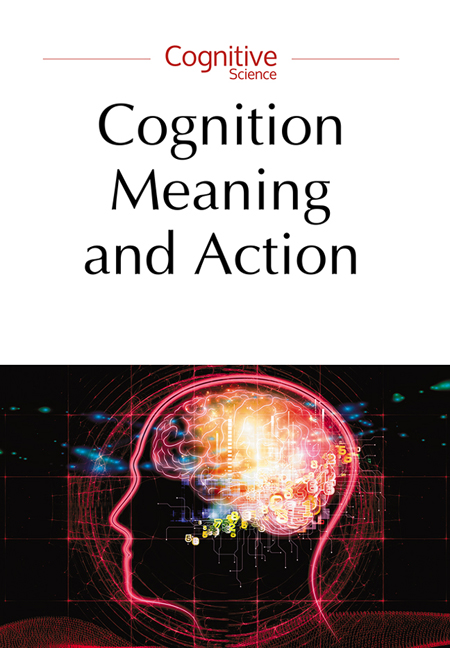Book contents
- Frontmatter
- Contents
- The crossroads of cognitive science
- Cognitive science: From computers to ant hills as models of human thought
- Two procedures expanding a linguistic competence
- Neurobiological basis for emergence of notions
- Similarity as distance: Three models for scientific conceptual knowledge
- The Approximate Numbers System and the treatment of vagueness in conceptual spaces
- Communication, cognition, and technology
- To tell and to show: The interplay of language and visualizations in communication
- Semiotics, signaling games and meaning
- Out of the box thinking
- The everyday of decision-making
- Short- and long-term social interactions from the game theoretical perspective: A cognitive approach
- Notes about Authors
The Approximate Numbers System and the treatment of vagueness in conceptual spaces
Published online by Cambridge University Press: 10 January 2018
- Frontmatter
- Contents
- The crossroads of cognitive science
- Cognitive science: From computers to ant hills as models of human thought
- Two procedures expanding a linguistic competence
- Neurobiological basis for emergence of notions
- Similarity as distance: Three models for scientific conceptual knowledge
- The Approximate Numbers System and the treatment of vagueness in conceptual spaces
- Communication, cognition, and technology
- To tell and to show: The interplay of language and visualizations in communication
- Semiotics, signaling games and meaning
- Out of the box thinking
- The everyday of decision-making
- Short- and long-term social interactions from the game theoretical perspective: A cognitive approach
- Notes about Authors
Summary
Introduction
The theory of conceptual spaces is intended to provide a framework for models of both symbolic and non-symbolic representations of knowledge and information (Gärdenfors 2000). As such, it seems to us to be very clearly suited to modeling pre-verbal representations belonging to a so-called core cognition, whose existence is postulated by cognitive developmental psychologists (Feigenson et al., 2004; Carey, 2009). In this paper we propose a treatment of representations of quantity that embraces both symbol-based and pre-verbal numerical concepts.
The representations we aim to study are related to the Approximate Number System (ANS). Cognitive psychologists claim that humans share with animals an abstract sense of quantity: they have a so-called “number sense”. To “number sense” amounts two core systems of representations, which get activated by different core mechanisms: the ANS is one of these mechanisms (Dehaene 1997, 2008; Gallistel 1993; Feigenson et al., 2004; Carey, Sarnecka, 2006).
The ANS is a core system in the sense that it is present in human apprehension of quantities before verbal conceptual these of quantities appears. But, it is claimed, it also underlies symbolic number-concept creation and it is active in the processing of quantitative information for the entire life of an individual. Firstly it reacts to nonverbal input and this remains the case through the whole lifespan (Halberda, Feigenson, 2008), it also gets activated through symbolic input. To exemplify the functioning of the ANS and the ANS-related representations, let us consider the following case: the reaction to a set of 17 elements corresponds to the seventeenth element of the ANS-sequence, i.e. a set containing 17 with some specific neighboring area.
It is not our objective to postulate anything about the relation between exact number names, i.e. numerals, and representations related to the ANS (Halberda, Feigneson, 2008; Mussolin et al., 2012; Wagner, Johnson, 2011; see also Nagen, Sarnecka, 2015). Instead, we observe that numerals are in certain contexts interpreted as vague terms (Krifka, 2009; Solt, 2011). It might seem surprising, as at first glance there is nothing less vague than a number. “Seven” refers to seven; “twelve dwarfs” are twelve entities of the type“dwarf”, etc.
- Type
- Chapter
- Information
- Cognition, Meaning and ActionLodz-Lund Studies in Cognitive Science, pp. 87 - 108Publisher: Jagiellonian University PressPrint publication year: 2015



